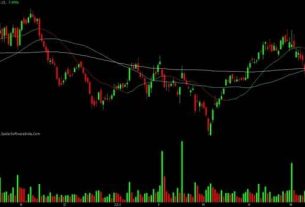
Options are wonderful instruments. They promise unlimited profit (in theory at least) and limited losses. However, with multiple strike prices available it becomes tricky to choose one best suited for us.
We all know that options premium is impacted by the passage of time. So, it is important to consider how much time is left for the expiry while choosing the strike price. The volatility of the stock also matters. It is important to see how volatile the stock is while selecting the strike.
Based on the above, we may be moderately or highly convinced about the expected price movement.
Lower the call or higher the put strike, higher will be the profit in absolute rupee terms. At the same time, the chances of being wrong are higher with lower calls and higher puts. This means that if my confidence is low, I will select a relatively higher call and lower put strike.
For Example, suppose the stock price is at 100. If I am highly convinced, I will choose 100 call or 100 put (call if I am bullish, put if I am bearish).
On the other hand, if my confidence level is low, I will go for 105 Call or 95 Put.
Similarly, we need to look at time left for expiry as well. One important thing to note here is that as time passes, the chances of a price move relative to the higher strike call and lower strike put goes down. The reduced chances will mean we are less likely to make money from the same higher call / lower put when there are just two days to expiry compared to when there are 10 days.
I generally follow the rule of thumb that if there are three or fewer sessions left for expiry, no matter what my confidence level is I stick to the strike that is closest to the current market price (CMP). The good part is that with limited time left for expiry the cost of these options is also relatively lower.
Lastly, strike selection can be improved based on the stock’s volatility. It is not difficult to tell apart highly volatile stocks from less volatile ones. No prizes for guessing that Indiabulls Housing Finance is highly volatile and ITC less so. If the stock does not fall into either one of these categories do not bother improvising.
But if it is predominantly highly volatile, higher calls and lower puts have relatively higher sensitivity relevance.
Choosing them could improve the returns a little as they would be less expensive to buy than strikes close to CMP. On the other hand, if the stock is like ITC, which is less volatile, it is advisable to stick to a strike closest to the CMP because higher calls and lower puts are relatively less susceptible to the movement in the price of the stock or index.
These are a few ways to narrow down strike selection. Sharpening the strike selection can improve profitability of winning trades compensating for any losses that may arise.
Disclaimer: The views and investment tips expressed by investment experts on Moneycontrol.com are their own and not those of the website or its management. Moneycontrol.com advises users to check with certified experts before taking any investment decisions.

